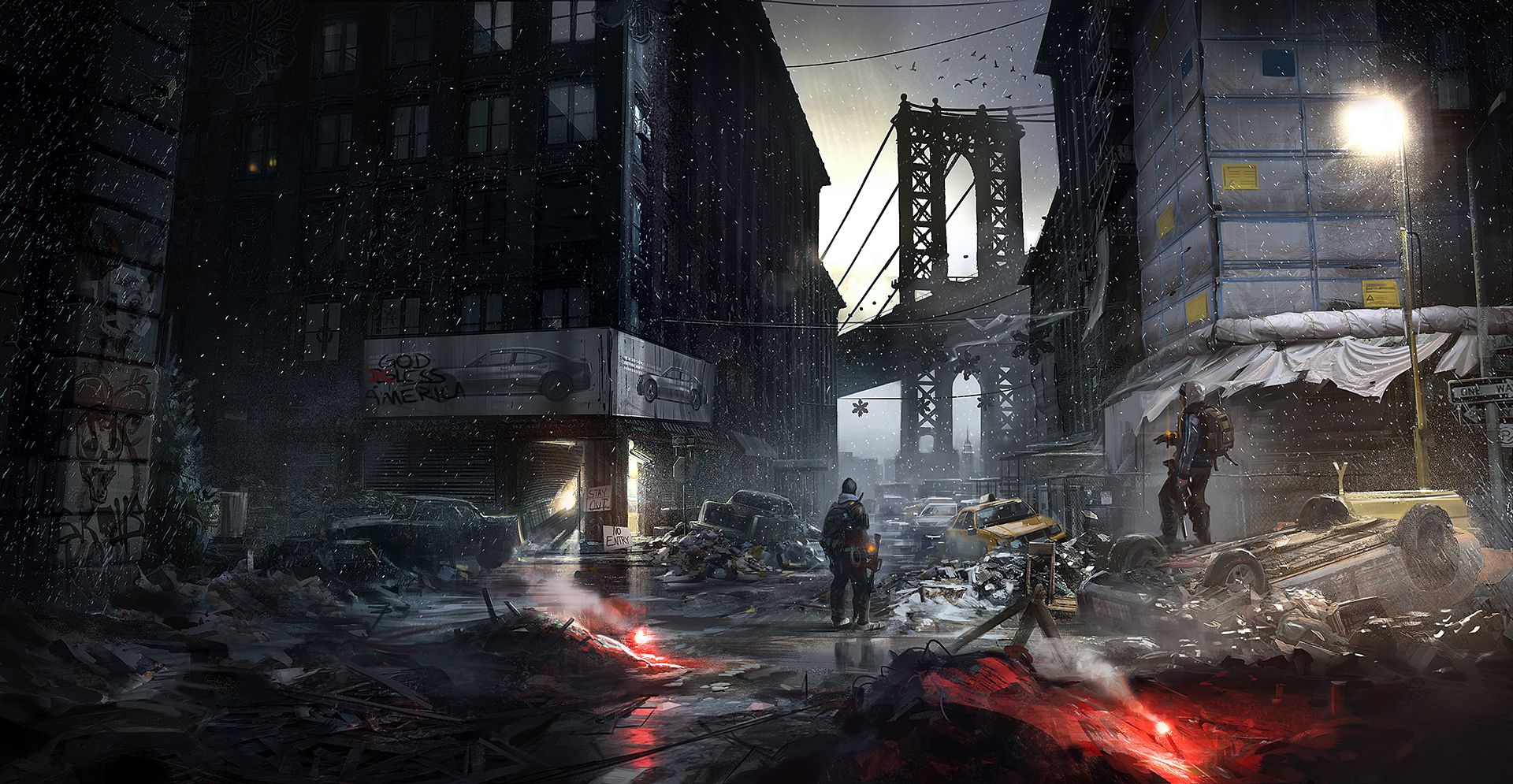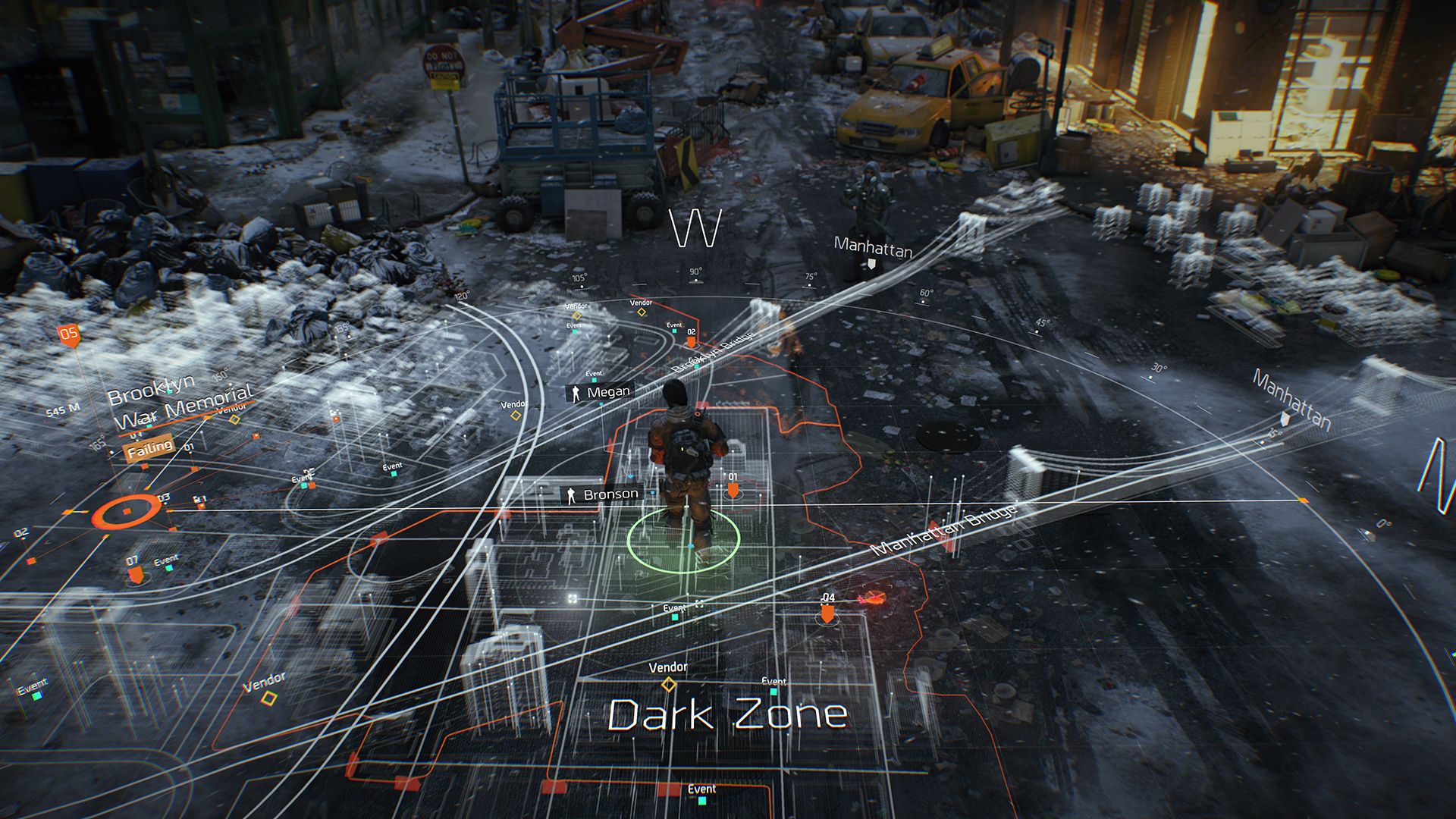If there's one game during E3 2013 that both pleasantly surprised and greatly impressed me, it was my time watching the hands-off presentation of Ubisoft Massive's Tom Clancy's The Division. What I enjoyed most wasn't just the gorgeous next-gen graphics of the Snowdrop engine, or the idea of a tactical team-based shooter in a grounded, realistic, and devastated New York setting; no, it was the concept of the game: bringing hope to an entire world teetering on the edge of chaos.
If you're a reader, movie-goer, or gamer, then chances are you've seen dozens of post-apocalytpic or dystopian worlds, settings where humanity just can't catch a break. Be it nuclear disaster (the Fallout series), an invasion or mutagenic infection of some sort (like the Cordyceps parasite in The Last of Us), a lack of resources (the upcoming Mad Max title), or zombies (pretty much everything, ever), the post-apocalyptic world brings together some key gaming conventions, like resource gathering, searching for loot, exploration, and of course your typical savage violence. There's something basic, something primal about it. Something easy. The world's gone to hell, there's no rules, so I can do whatever I want, right? Some would even say it's the essence of gaming, a literal power trip in a virtual world where you are the hero, you are the legend, you are the king of awesome.
But what happens when you're too late to stop the apocalypse? What happens when its not zombies or mutants you're trying to combat, but refugees of financial and political collapse? How do gamers save a world from an economic apocalypse?
Ubisoft Massive made it clear: you're not just here to kick ass and take names, you're here to bring hope to a world that is mid-crisis, but not beyond saving. The Division is not about the post-apocalypse or the pre-apocalypse, but the mid-apocalypse.
http://www.youtube.com/embed/KT_05h3EQ98?feature=player_detailpage
The Division is based on the idea that a virus released on Black Friday has rapidly infected millions and millions of shoppers, causing panic, overrunning hospitals with victims, and initiating world economic calamity, all within a few days. The above trailer has a sort of metaphor to it, that our economy is diseased, and poisoning everyone who becomes a part of it. One bad move, and everyone falls. Thankfully, you're part of one agency called The Division, an agency who saw it all coming, and prepared for such an eventuality. Of course, planning for the apocalypse isn't as easy as one would hope, but that's not stopping you and your allies from trying your hardest to prevent the end of the world.
The first thing I noticed was that this world you're tasked with saving looks and feels real. Set in my hometown, The Division's New York City looks remarkably accurate, unbelievably authentic, and unbelievably vivid. Ubisoft Massive confirmed to me that their New York isn't going to be a 1:1 representation of a Google map, of course, but that they plan to include much of the Greater New York City area, and make it as accurate as possible for a video game.
Graphically, The Division shines. Of all the next-gen games I've seen, The Division certainly looks like one of the prettiest, even when grim and cold. With New York in the middle of its frigid season, you could see frost built up on the glass, steam coming from manholes, and litter scattered everywhere around the ruined city (though, to be fair, the litter was probably there before the city fell into chaos). Also, when you walk down a street, the name hovers above like a holograph, letting the audience know that the demo started along Water St. Similarly, a holographic interface floats just above your character's forearm, replacing the need for a cumbersome menu or HUD. And with a game this visually appealing, you can't fault Ubisoft Massive with taking the minimalist approach.
While The Division is a tactical shooter, much of its mechanics and balance revolve around conventions set up by RPGs, like having a well-rounded team, unlocking and upgrading skills and abilities, and looting for new items and weapons. While you won't see a white mage wandering onto the battlefield to cast a Curaga spell, you will have teammates that can specialize in medical aid that can heal allies, for example. If you're looking for a little freedom in how you play, The Division will not force you into firmly-defined classes and inescapable or inflexible job roles. Instead, players can unlock skills and abilities and tailor them for different situations. How much liberty players will have in versatility is unknown so far, but Ubisoft Massive emphasized tactics and teamwork over leveling up arbitrary job systems.
Much of what we saw matched the gameplay everyone else saw in the seven minute demo that was released on the web soon after The Division's unveiling. As you can see in that video, that edge of realism put into the game affected not just the visuals, but the combat, as well, with bullets that bit through the windows and doors of police cars, and A.I. that forced players to stay on their toes to avoid getting hit. Ubisoft Massive said not to expect The Division to be a game where you can take on a full magazine of bullets, ask for more, and keep moving. Even with stat boosts, character customization and armor, bullets will hurt. The point is to reinforce that there is danger around, that you are in danger when in combat situations, and that you need your team to survive.
http://www.youtube.com/embed/njfj6KwEAfg?feature=player_detailpage
Another major idea behind The Division is that you'll always be connected. Recently it was revealed that The Division will be a persistent online experience, so its world is literally always connected. This doesn't mean you can't play alone or just with friends, but just that the world is always in your reach, and according to my conversation with Ubisoft Massive, all connected through one server. Players will have access to the world even when not behind a console and controller, with a companion app that allows gamers to help their comrades while on-the-go. We were shown the game and the app running in real-time, synchronized perfectly, with a player on a tablet and in control of a drone. This drone can target hard-to-reach enemies for their allies to see, not only giving an advantage in sight, but also conferring a damage boost for allies who attack that enemy. The drone can also heal and offer supplies to teammates, with more abilities unlocked over time. Most impressive was the ability to send down a missile strike, which cleared a roof of gunmen who were firing down at the drone's team.
You may not be a fan of the idea of an online-only (or online-mainly) shared world that may just become the next competitive shooter in a market of many, but The Division seems to be going for a truly different experience, one that is as much about fun and co-op combat as it is about offering a grounded world nearly identical to our own to play in and is always on the brink of madness. Through it all, there is a hope: a hope that you can save the world from itself, and hope that this game will bring something engaging and exciting to our consoles when it arrives next year to the PS4 and Xbox One.
For a closer look at the world of The Division, check out the gallery below for screenshots and concept art.


